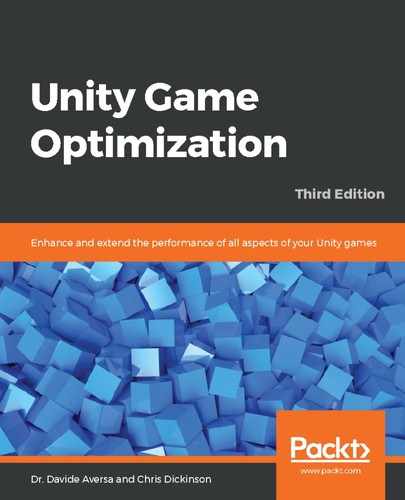The Project window's search bar allows us to filter for objects of a particular type by clicking on the small icon to the right of the search bar. This provides a list of different types that we can filter by revealing all the objects of that type within the entire project. However, selecting these options simply fills the search bar with a string of the t:<type> format, which applies the appropriate filter.
Thus, we can simply type the equivalent strings into the search bar for the sake of speed. For instance, typing t:prefab will filter for all Prefabs, no matter where they are in the Hierarchy window. Similarly, t:texture will reveal textures, t:scene will reveal scene files, and so on. Adding multiple search filters to the search bar will include objects of all types (it doesn't reveal objects that only satisfy both filters). These filters are modifiers in addition to name-based filtering, so adding a plain text string will cause a name-based search to occur through the filtered objects. For example, t:texture normalmap will find all the texture files that include the word normalmap in their name.
If we're making use of Asset Bundles and the built-in labeling system, the Project window's search bar also allows us to hunt down bundled objects by their label using l:<label type>.
If a MonoBehaviour script contains serialized references (using [SerializeField] or public) to Unity assets, such as meshes and textures, then we can assign default values to the script directly. Select the script file in the Project window; the Inspector window should contain a field for the asset so that we can drag and drop the default assignment into it:

By default, the Project window splits files and folders into two columns and treats them separately. If we prefer the Project window to have a typical hierarchical folder and file structure, then we can set it to One Column Layout in its context menu (the hamburger icon at the top right). This can be a great space saver in some Editor layouts.
Right-clicking on any object in the Project window and selecting Select Dependencies will reveal all the objects that this asset relies on so that it can exist, such as textures, meshes, and MonoBehaviour script files. For scene files, it will list all the entities that are referenced within that scene. This is helpful if we're trying to perform asset cleanup.
